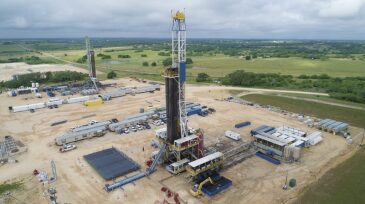Data & Analytics
EZOps will integrate its Mobile Oilfield Management platform into the college’s energy technology program, giving students hands-on experience with digital tools used in modern oilfield operations.
Switching from continuous circulation to cyclic huff-‘n’-puff operation in enhanced geothermal systems can significantly delay thermal breakthrough, sustain higher production temperatures, and improve long-term economic performance.
Researchers at the University of Houston have developed a new ultrathin, carbon-based film that could make AI chips run faster, cooler, and more energy-efficient.
-
As current sources of competitive advantage erode and new ones emerge, perhaps the only constant in a highly uncertain world is the criticality of good talent for success. Upskilling the workforce for analytics, therefore, needs to be a one of the top priorities as we sail unchartered waters.
-
Greg Leveille said he is optimistic that the shale sector will be able to bounce back from its second downturn in 5 years. The trick this time, he says, will be not just investing in new digital technologies but putting them to work.
-
The Offshore Technology Conference was cancelled for the first time ever due to the COVID-19 pandemic. But the flow of ideas continues. As proof, this curated summary of technical papers highlights unique concepts that might someday reduce the offshore sector’s heavy cost burdens.
-
The Internet giant is walking away from the exploraiton and production business following a report that claimed it was undermining its own climate initiatives by offering its machine-learning tools.
-
Alan Nelson is not only the new chief technology officer at ADNOC, he is the company’s first person to hold the title at the integrated oil company.
-
Moving away from siloed organization to the co-creation of an IT/business strategy is an important progression in the journey of digital transformation.
-
HML methods have become common in recent applications. We have probably been using some of them without realizing it. It is, however, necessary to know about them in the context of understanding the underlying concepts of their methods and how they work.
-
Producers and investors continue to reward small companies with big solutions that lean on new software and hardware to lift the bottom line of one the world’s few trillion-dollar industries.
-
The new feature comes from the desire of readers and reviewers to broaden the scope of JPT’s coverage of developments related to digital transformation and the applications that the industry can derive from these exciting possibilities.
-
Welcome to the debut of the Digital Data Acquisition feature. The new feature comes from the desire of readers and reviewers to broaden the scope of JPT’s coverage of developments related to digital transformation and the applications that the industry can derive from these exciting possibilities.













